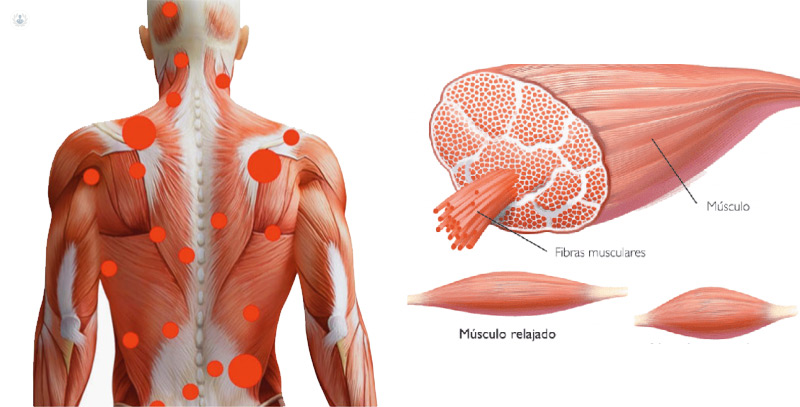The concept of contracture and its relationship with the physiotherapist
Undoubtedly, the word contracture has been associated with the physiotherapist as much or more than terms such as sport or massage. Among the non-health public, it has been extended as a reference to an inflammation or pain located in some body point that, theoretically, would be solved with a little massage therapy precisely and in a fast and effective way.
So much so that, on many occasions, when a patient comes to our center with pain of these characteristics, after having sought the solution in street opioids (such as ibuprofen) without much success, he usually requests the famous technique. As if the real problem was going to be solved with half an hour face down on the stretcher. But we know we don’t.
Definition of contracture
Muscle contractures could be defined as the inability of the muscle to relax, that is, a contracture consists of a muscle spasm maintained over time involuntarily.
Alain Lagueny, defines it in his article as a defensive act of the muscle in situations of stress. This happens because by staying contracted, your energy expenditure is lower than if you force yourself to relax. Some causes of contractures would be:
- The environmental cold, or muscle stress without a previous warm-up, can generate muscle overload.
- Trauma.
- Muscle overexertion, both by a sudden and very intense solicitation and the demand maintained over time. Also understand the cases of maintained postures, repetitive movements, alterations of movement patterns or alterations of the body schema.
- Alterations in the biochemistry or metabolism of the organism.
- Emotional stress accompanied by somatization.

It is important to emphasize that it is a symptom and not a pathology in itself. That is, it accompanies or is part of the course of a major disease, which may have traumatic or neurological origins.
For example, we could talk about congenital torticollis or infantile paralysis, pathologies whose symptoms are accompanied by hypertonia or muscle overload.
If we classify contractures according to their cause, we could distinguish between:
- Adhesion: It is produced by the lack of movement. Your body is asking you to exercise to function better.
- Scar tissue: A scar that limits mobility. The limitation will depend on the depth and adhesions created with the adjacent tissues.
- Irreversible: This contracture occurs when muscle tissues, soft and connective are replaced by bone.
- Myostatic: It is produced by a sudden movement but the pain is momentary and is very easy to cure.
- Pseudomyostatic: This contracture is caused by the central nervous system and is related to its pathologies.
Treatment of contractures
Depending on its origin and severity, its treatment may be conservative or surgical. But we will talk on this occasion about physiotherapy treatment, which does not necessarily have to be non-invasive:
- Manual Therapy: By massage, stretching or muscle inhibition. As we have already reported, it is the most common and well-known.
- Dry Needling: it is a therapy that seeks to provoke a Local Spasm Response or REL by causing a needle to be introduced into the muscular belly producing muscle inhibition.
- Percutaneous neuromodulation: in combination with dry needling and placing needles in the path of the motor nerve of the muscle, tissue relaxation is sought.
- Ultrasound.
- High power laser.
- Therapeutic exercise.
Many of the techniques that we have just named require face-to-face, that is, they need the patient to go to the center for a rehabilitation professional to perform them. All but one: therapeutic exercise.
As we have already reported in other entries of this blog, therapeutic exercise is one of the best ways to alleviate and cure the effects of a large number of diseases. But of course, we would not be TRAK if we did not link this article with digitalization and the possibility of establishing a telematic treatment.
Treating contractures with digital rehabilitation
Therapeutic exercise has proven to be an effective tool against the most serious cases of contractures: those that have to do with conditions of the central nervous system.
Thus, studies such as those carried out by Peipei Han et al. (2017) or Angeleni et al. (2021) review the interventions performed in patients with stroke (Stroke) or ALS (Amyotrophic Lateral Sclerosis) and affirm that the introduction of patients in an exercise program can improve their symptoms in this regard.
From this point, we can affirm that monitored therapeutic exercise interventions with applications such as TRAK can guarantee progressive treatment and improve the quality of life of those people who live with these types of problems.